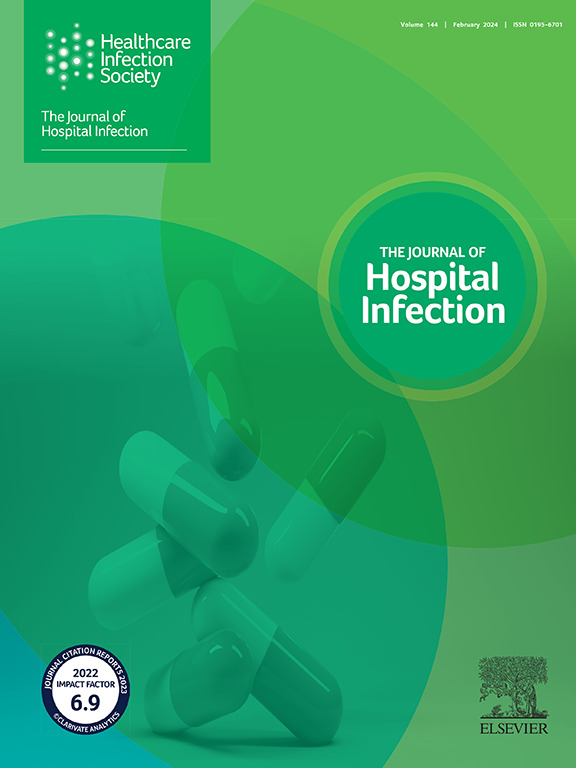Viral acute respiratory infections in neonatal intensive care healthcare workers: a nine-month point-prevalence cohort study
IF 3.1
3区 医学
Q1 INFECTIOUS DISEASES
引用次数: 0
Abstract
Background
Healthcare-acquired viral acute respiratory infections (ARIs) are a common problem in neonatal care. Health-care workers may transmit viruses to neonates when having a symptomatic or asymptomatic ARI.
Aim
This prospective nine-month repeated point-prevalence cohort study aimed to investigate the occurrence and aetiology of asymptomatic and symptomatic ARIs in health-care employees in a tertiary neonatal intensive care unit (NICU).
Methods
Flocked nasal swabs were collected on every second Tuesday in a NICU from all personnel working on that day. Additionally, in the case of ARI symptoms, a nasal swab was self-collected by the study subjects.
Findings
A virus was detected in 16 (3.3%) of the asymptomatic subjects. Altogether 36 symptomatic ARIs (mean 0.5 per person) were reported.
Conclusion
Our data suggests that ARIs are not uncommon among NICU health-care workers and moreover are commonly asymptomatic. It is noteworthy that these individuals may transmit.
新生儿重症监护室医护人员的病毒性急性呼吸道感染:一项为期9个月的点流行队列研究
医疗保健获得性病毒性急性呼吸道感染(ARIs)是新生儿护理中的一个常见问题。当有症状或无症状急性呼吸道感染时,卫生保健工作者可能会将病毒传播给新生儿。这项为期9个月的前瞻性重复点患病率队列研究旨在调查三级新生儿重症监护病房(NICU)医护人员无症状和有症状ARIs的发生率和病因。每个第二个星期二在新生儿重症监护病房收集当日所有工作人员的鼻拭子。此外,在出现ARI症状的情况下,研究对象自行收集鼻拭子。无症状感染者中检出病毒16例(3.3%)。总共报告了36例症状性急性呼吸道感染(平均每人0.5例)。我们的数据表明急性呼吸道感染在新生儿重症监护室医护人员中并不罕见,而且通常是无症状的。值得注意的是,这些人可能会将呼吸道病毒传播给脆弱的新生儿。建议加强感染控制措施,以促进患者安全。
本文章由计算机程序翻译,如有差异,请以英文原文为准。
求助全文
约1分钟内获得全文
求助全文
来源期刊

Journal of Hospital Infection
医学-传染病学
CiteScore
12.70
自引率
5.80%
发文量
271
审稿时长
19 days
期刊介绍:
The Journal of Hospital Infection is the editorially independent scientific publication of the Healthcare Infection Society. The aim of the Journal is to publish high quality research and information relating to infection prevention and control that is relevant to an international audience.
The Journal welcomes submissions that relate to all aspects of infection prevention and control in healthcare settings. This includes submissions that:
provide new insight into the epidemiology, surveillance, or prevention and control of healthcare-associated infections and antimicrobial resistance in healthcare settings;
provide new insight into cleaning, disinfection and decontamination;
provide new insight into the design of healthcare premises;
describe novel aspects of outbreaks of infection;
throw light on techniques for effective antimicrobial stewardship;
describe novel techniques (laboratory-based or point of care) for the detection of infection or antimicrobial resistance in the healthcare setting, particularly if these can be used to facilitate infection prevention and control;
improve understanding of the motivations of safe healthcare behaviour, or describe techniques for achieving behavioural and cultural change;
improve understanding of the use of IT systems in infection surveillance and prevention and control.
 求助内容:
求助内容: 应助结果提醒方式:
应助结果提醒方式:


